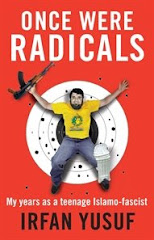Iran is a rogue state. It is ruled by mullahs who support and sponsor terrorism and who are not to be trusted. Iran represents a threat to the West. If Iran does not agree to perfectly reasonable demands concerning its nuclear program, the rest of the world should punish it. That punishment should start with economic sanctions and perhaps even include all-out war and regime change.
This is what we in the West have been taught to believe. This is also what neo-Conservative propagandists want us to know. This is also the accepted wisdom as propagated by the foreign affairs establishment and by newspapers owned by News Limited.
But how much of this picture of clichés tell us about the real Iran? What do we know about Iranian society? What do we know about the everyday lives of real Iranians?
One way to learn about Iran is through its bloggers. Conventional journalists may frown on blogging as the journalistic sport for amateurs. But blogging is one of the few means open and available to people to project their genuine sentiments on cyberspace.
We Are Iran is a book published in the UK and authored by Iranian expatriate Nasrin Alavi. The book is a frank look at Iranian politics and society through the eyes of its bloggers.
And why should Iranian bloggers matter? Well, for a start, we need to understand something about Iran’s population. 70% of Iranians are aged under 30. Literacy is over 90%. The majority of Iranians attending tertiary institutions are women. Adult and computer literacy in Iran are higher than in any other Middle Eastern country and than in many European states.
Farsi is the language of Iran. It is also the 4th most frequently used language for keeping blogs. There are more Farsi blogs than blogs in Spanish, German, Italian, Chinese or Russian. And there are more Iranians able to access blogs than other people in the region. 2001 data from the World Bank shows that Iran has more personal computers per 1,000 people than the regional average.
As at the time Alavi’s book was written (2005), there are hardly 50 known blogs identifying their authors as Iraqis. Compare this to more than 64,000 Farsi blogs.
For many Iranians, blogs provide a means of communicating views deemed too subversive by the powers-that-be. Iran has been described by “Reporters Without Borders” as the biggest prison for journalists in the Middle East. In the last 6 years, some 41 newspapers have been closed by the regime. Many more magazines have been closed.
Alavi’s book is useful because it provides a peep inside the Iran which neo-Con commentators rarely allow. Iranian bloggers portray the youthfulness of ordinary Iranians, their irreverence to religious authority and their feelings about a political process they feel has failed to reflect their wishes.
Iran is a country whose population is dominated by people who came of age after the 1979 revolution which swept Ayatollah Khomeini to power. They are not necessarily loyal to the Islamic Republicanism of the current Iranian government.
At the same time, Iranians are also resentful of some political currents in the United States which seek war and conflict with Iran at all costs. Iranians are not overly religious, but they love their country and faith enough to resent attempts to demonise all Iranians and all Muslims.
Nasrin Alavi’s book is well worth reading. It provides a look into Iran’s future. If the Farsi bloggers are any indication, the West and the rest of the world have little to fear from ordinary Iranians.
© Irfan Yusuf 2006
Monday, June 26, 2006
Understanding Iran through its bloggers
Subscribe to:
Posts (Atom)









